
BIOS and Overclocking …
Get fast to the right UEFI settings …
ASRock X370 Gaming-ITX/ac BIOS and Overclocking
ASRock X370 Gaming-ITX/ac UEFI BIOS Update
ASRock X370 Gaming-ITX/ac overclocking
ASRock X370 Gaming-ITX/ac memory settings
ASRock X370 Gaming-ITX/ac voltage settings
ASRock X370 Gaming-ITX/ac Overclock even easier
ASRock X370 Gaming-ITX/ac BIOS undervolting
ASRock X370 Gaming-ITX/ac Fan control
BIOS and overclocking …
Let us continue with the BIOS / UEFI Setup options and the UEFI overclocking. Press F2 or Del during PC boot to get access to the UEFI Setup.
The ASRock X370 Gaming-ITX/ac UEFI BIOS has a graphical user interface that allows intuitive mouse operation or can be operated with a conventional keyboard.
As we already reported in the ASRock AB350 Gaming K4 review, the ASRock EZ Mode is (yet?) not available on AMD AM4 motherboards from ASRock. But the good old graphical UEFI menu is the first choice for advanced OC enthusiasts anyway. The entry page provides important information such as the CPU used, the UEFI version, the DDR4 memory used with dual channel support, time and date.
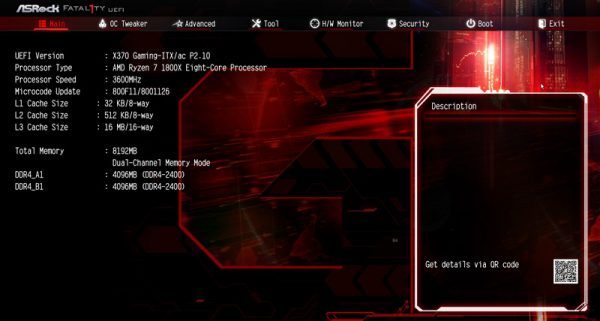
Also the System Browser view, ASRock Tech Service and the My Favorite menu is (yet?) not available at this ASRock X370 motherboard, but it has a selection to view the UEFI in Full HD and also offers the Active Page on Entry selection, where you can decide which UEFI page you want to see when you enter the UEFI Setup. This is very helpful mainly for overclocking, since one have to enter the OC Tweaker menu very often to find the best OC settings. Or you just add all necessary points to the My Favorite overview and start directly to the My Favorite overview page. At the ASRock X370 Gaming-ITX/ac you find the Active Page on Entry option and the Full HD UEFI selection in Advanced.
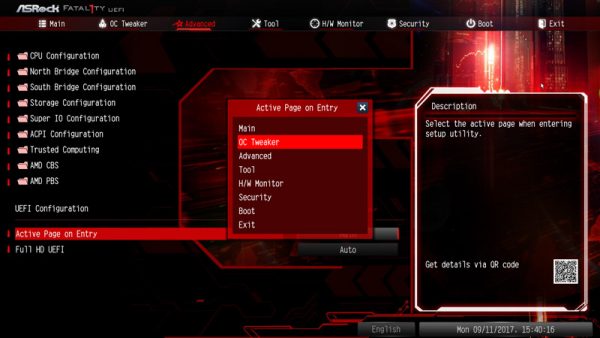
UEFI BIOS Update …
Before we begin with the UEFI overclocking settings, we first update the UEFI BIOS to the latest version. To flash the UEFI update ASRock offers some possibilities, e.g. the very simple Instant Flash or the ASRock Internet Flash with a direct connection to the Internet. By the so-called ASRock Instant Flash option in the tool screen or via F6 during PC start you get into the ASRock Instant Flash utility. You can easily flash a previously downloaded ASRock BIOS without a boot CD or similar by simply starting the ASRock Instant Flash utility. Just select the BIOS Flash ROM from the desired drive, like an USB stick.
This time we use the ASRock Instant Flash Option again and check the ASRock website first to see if and which BIOS version is available. The board has already been delivered with the BIOS P2.10. At the review date, the UEFI BIOS version P3.10 was available as the latest download, which we installed immediately.
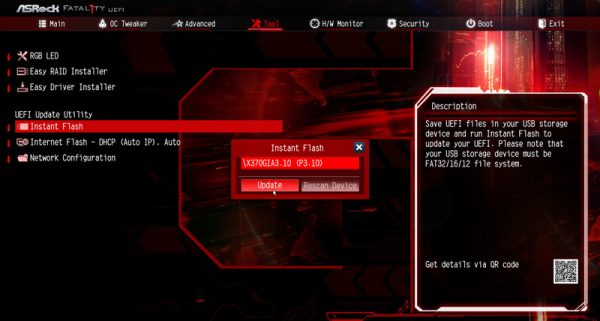
The new UEFI version will be installed after a short confirmation.
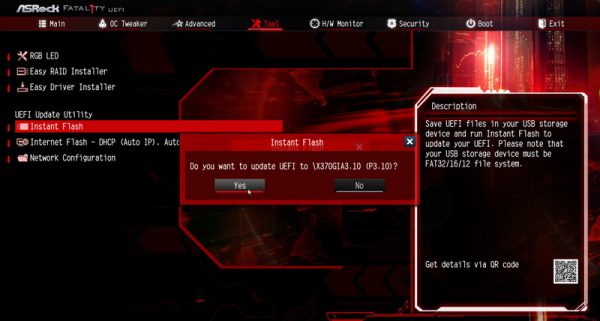
After a restart the new BIOS version is available and can be checked directly on the entry side, as you can see here with the AMD Ryzen 5 1600 CPU.
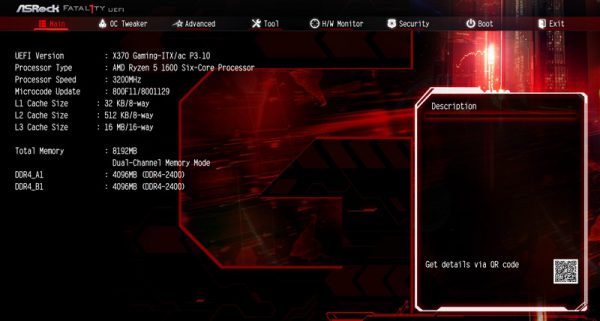
In addition, we tested the X370 motherboard with an AMD Ryzen 7 1800X CPU to see how the currently most powerful AMD processor behaves with the high-end X370 ITX motherboard.
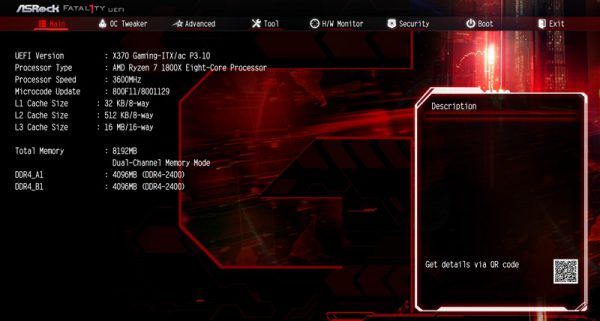
On the Tools page you will find the RGB LED entry. In the ASRock RGB LED menu of the Z270 series you could make all RGB LED settings graphically via the UEFI. Not so with the ASRock AMD motherboards. However, at least at the time of the test, there is a selection for activation and deactivation as well as adjustment of the lighting.
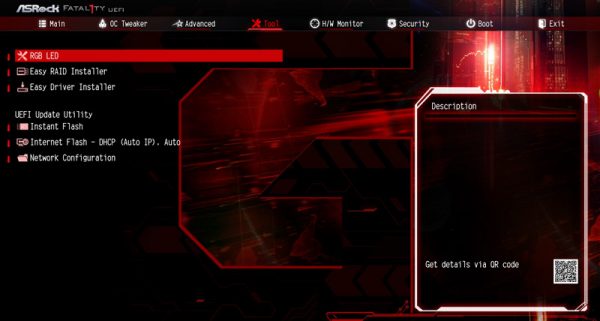
The RGB LED settings are not displayed graphically, but they are also available in the UEFI. But it’s much more comfortable (as shown on the previous page of the test) in Windows via the ASRock RGB LED software.
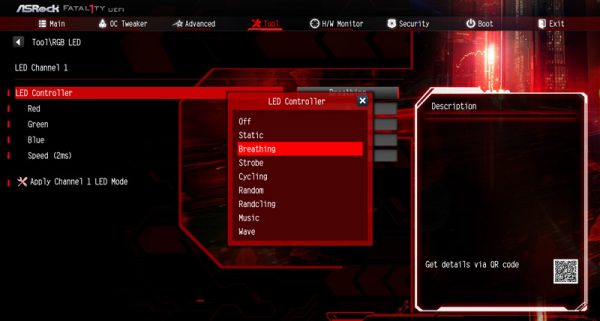
If you have read a bit about the AMD Ryzen, you will have read a lot of articles about difficulties with the first AMD driver installation. ASRock makes driver installation very easy for the user by offering the Easy Driver Installer, which is an easy way to download the latest drivers.
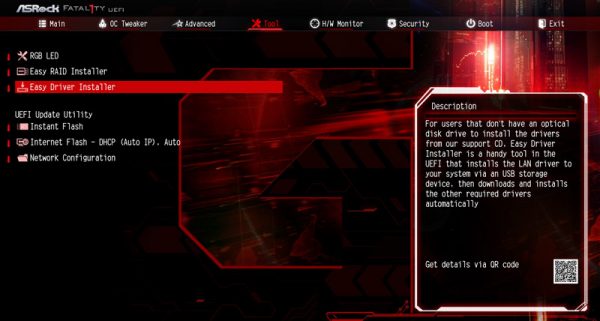
ASRock X370 Gaming-ITX/ac overclocking …
Now let’s get to AMD Ryzen overclocking with the X370 chipset on the ASRock X370 gaming ITX/ac motherboard. ASRock divides the OC-Tweaker menu of the ASRock X370 Gaming ITX/ac into CPU Configuration, DRAM Configuration and Voltage Configuration. These OC settings are summarized on a single page – so these settings remain clearly visible.
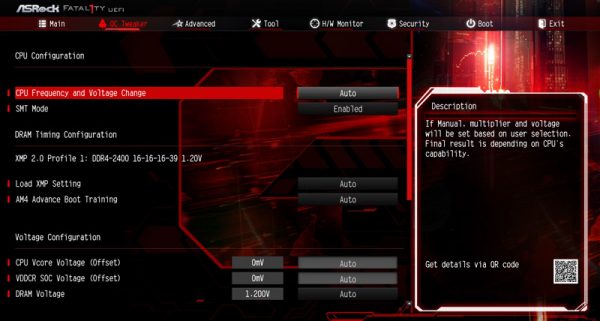
Let’s start at the top – contrary to the B350 chipset, there are significantly more OC settings, but no direct BCLK settings to choose from.
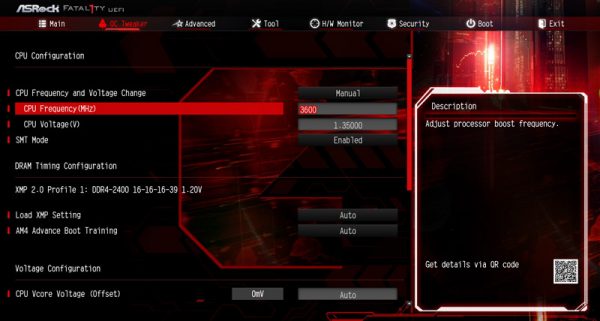
AMD Ryzen 5 and AMD Ryzen 7 processors have an unlocked multiplier so that you easily can increase the CPU frequency. With the AMD Ryzen 7 1800X CPU (default clock 3600 MHz at a CPU ratio of 36x) the ASRock X370 Gaming-ITX/ac motherboard offers a range from 2250 MHz up to 6300 MHz.
ASRock X370 Gaming-ITX/ac memory settings …
In the DRAM Configuration menu you will find all important memory settings. Thanks to Load XMP Setting support, XMP memory modules can be set up correctly in the UEFI BIOS with just one mouse click.
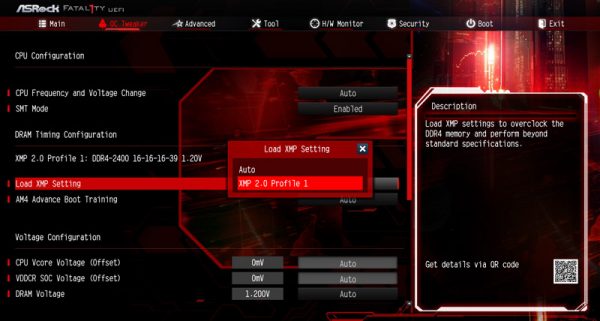
Alternatively, you can select the values yourself. In the BIOS version P3.10 there was no DRAM clock setting in the OC Tweaker menu (yet?). Therefore you can find all important memory settings under Advanced -> AMD CBS -> DRAM Timing Configuration. That’s a bit awkward.
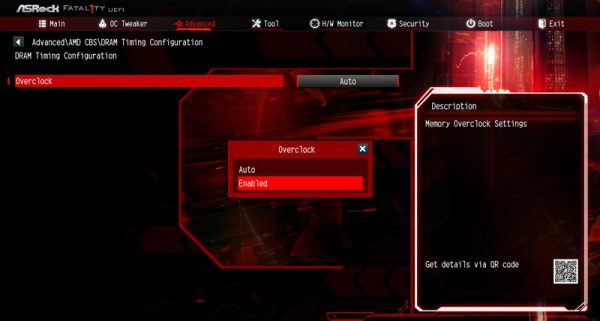
There you can now select the DDR4 memory clock manually.
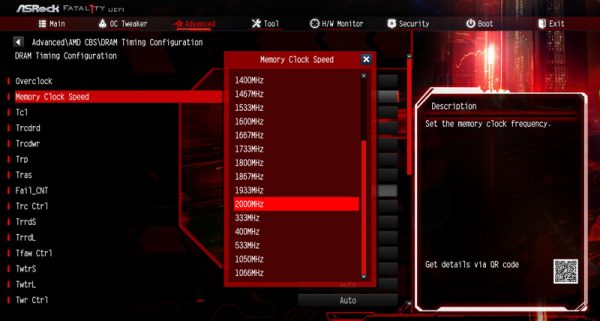
All DDR4 timings can be adjusted manually.
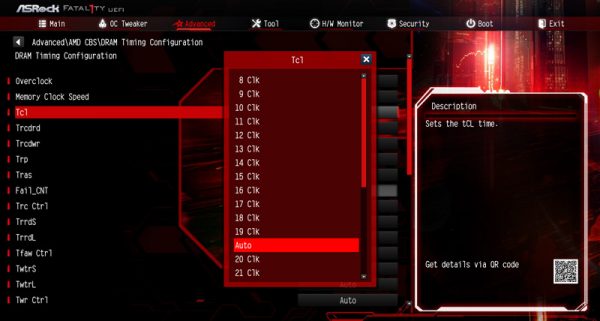
ASRock X370 Gaming-ITX/ac voltage settings …
Now we come to the different voltage settings that can be adjusted in the UEFI.
For the CPU Vcore you can set the offset value. Furthermore, the X370 motherboard has VDDCR_SOC Offset, 2.50V Voltage, +1.8V Voltage and +1.05V Voltage, which allows the AMD Ryzen CPU to be overclocked despite the ITX system.
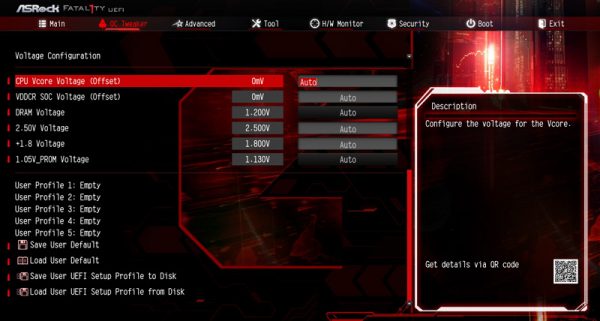
The DDR4 voltage can be increased from 1.100 to 1.500V in the Voltage menu, which can be used to undervoltage or overclock DDR4 modules.
ASRock X370 Gaming-ITX/ac easy overclocking …
If you prefer to overclock in Windows, you can do many of the above voltage and frequency settings even with the ASRock F-Stream tool or as shown in the soon published AMD Ryzen OC guide you can also overclock with the AMD Ryzen Master Tool.
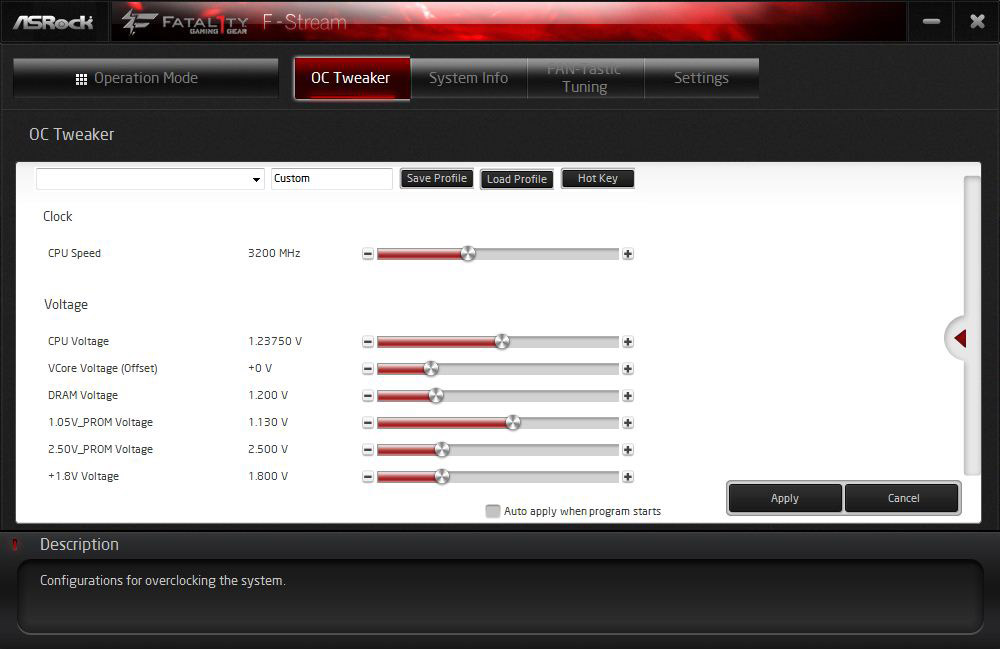
Once the desired settings have been found, you can save up to five different BIOS settings with names in the UEFI under OC Tweaker.
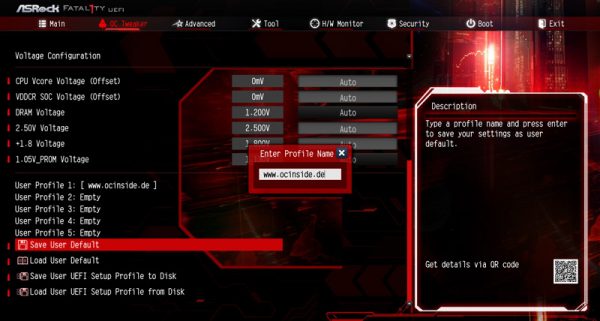
For example, you could store a balanced BIOS setting, overclocking settings and undervolting values or Office and gaming settings as a user profile, so that you can quickly reload these values at any time.
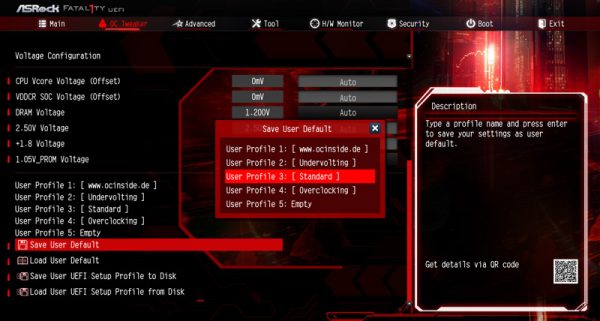
Also interesting is the Save User UEFI Setup Profile to Disk option. Just click to save your own UEFI settings on the hard drive or an USB stick.
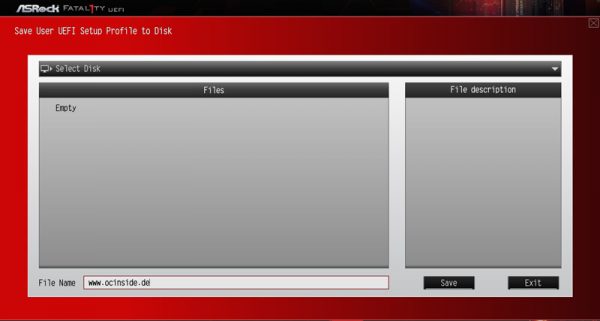
BIOS Undervolting …
Downclocking or underclocking is also tested in this review. It was possible to lower the AMD Ryzen 5 1600 CPU frequency down to approx. 3200 MHz. Of course, underclocking is like overclocking outside of the manufacturers specification, so it is necessary to have some luck. ASRock gives several options for easy PC underclocking / downclocking.
By the way, the AMD Ryzen P-States setting is also very hidden on this X370 board.
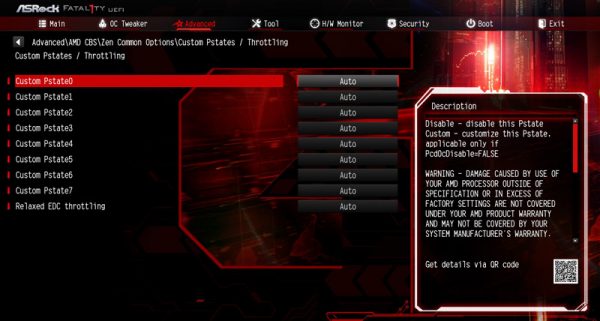
The PStates are very interesting for AMD Ryzen optimization and offer extensive settings depending on the CPU status.
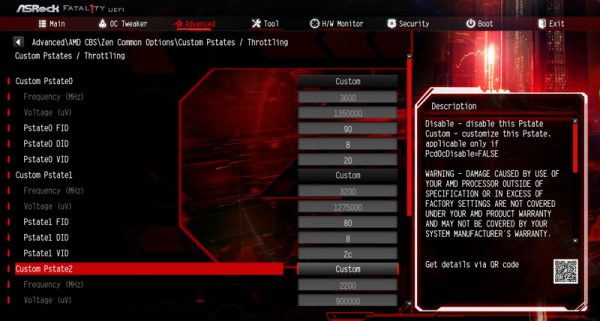
Of course, this is by no means all UEFI settings, as you can still choose from CPU Configuration, North Bridge Configuration, South Bridge Configuration, Storage Configuration, Super IO Configuration, ACPI Configuration, Trusted Computing, AMD CBS Menus and AMD PBS Menus.
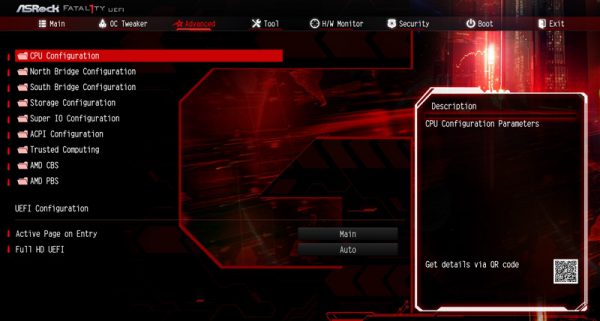
The AMD Ryzen settings under AMD PBS and CBS are new, where you can also set the above mentioned custom core PStates under Zen Common Options.
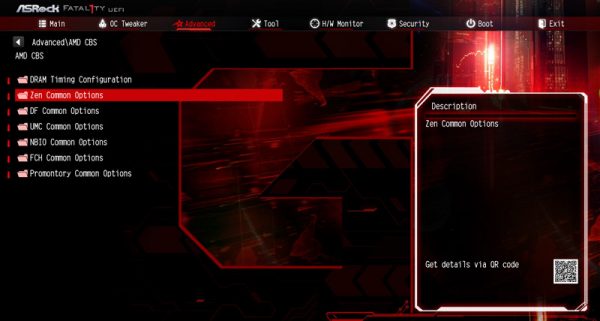
Under Advanced -> AMD CBS -> Promontory Common Options -> PT USB Configuration Options you will find the USB ports.
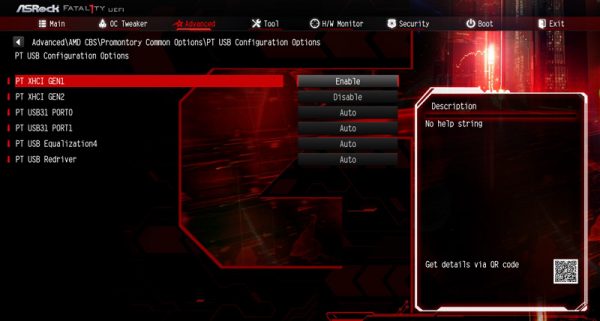
The SATA controllers can be found at the AMD Ryzen in the UEFI under Advanced -> AMD CBS -> FCH Common Options -> SATA Configuration Options.
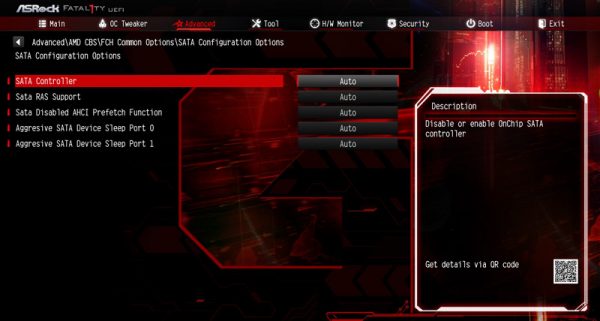
Here we still hope for a better overview in order to make all important adjustments as usual. As we know ASRock, there will be a BIOS update soon, which will make it much easier to find and adjust these basic settings … maybe with an search function in the UEFI, which we would like to suggest again. 😉
Fan control …
The UEFI Setup of the passive cooled X370 Gaming-ITX/ac motherboard offers extensive temperature fan control options. The settings for the fan controller can be found in H/W Monitor directly below the temperature and voltage display.
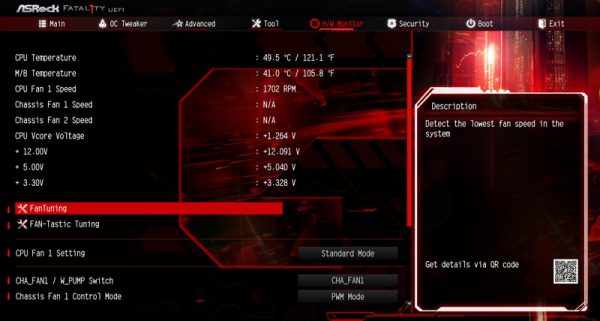
Here you can find the selection of the CPU fan, the chassis fans or the W_Pump switch.
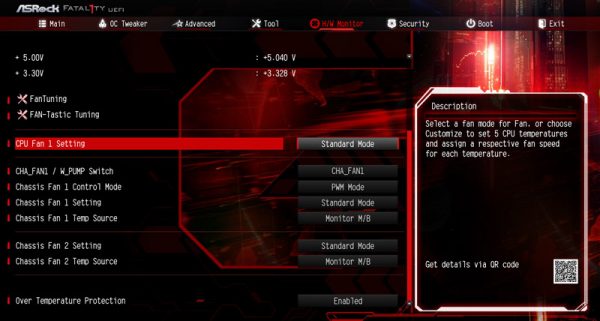
You have the choice between Customize, Silent, Standard, Performance and Full Speed. The fan settings are changed immediately, so you can hear the sound differences immediately.
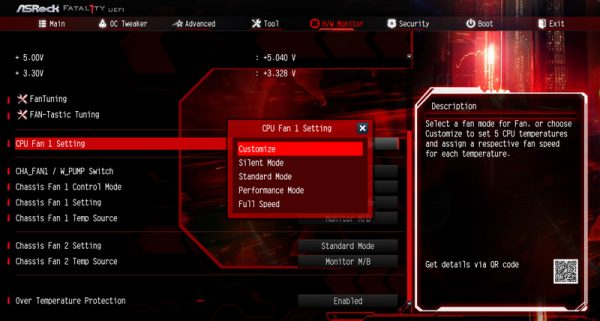
In Customize mode there are several temperature steps available to assign a certain fan speed.
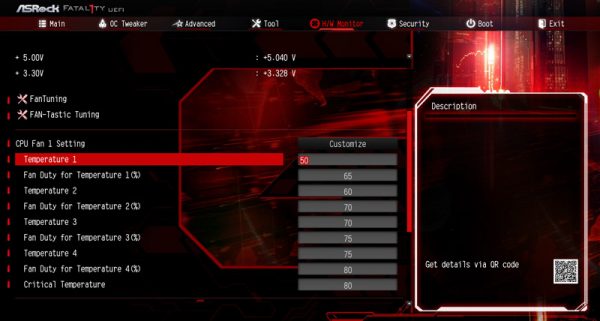
Contrary to the ASRock AB350 Gaming K4 motherboard, ASRock has again integrated the graphical interface in the UEFI setup for controlling the fans. You can find the FAN-Tastic Tuning menu also in the H/W monitor and thus can make all the settings very clearly. Simply select the respective fan connector on the left and select the mode on the right side: Silent, Standard, Performance or Full Speed.
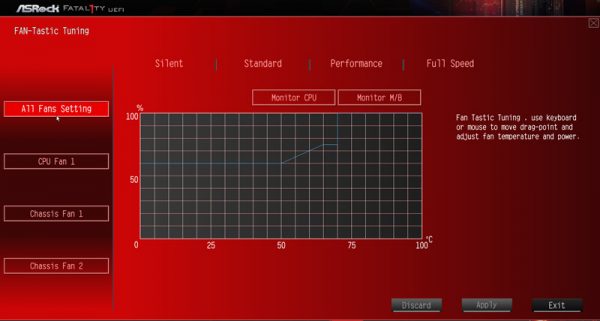
In Customize Mode you can even select and save the values directly in the diagram.
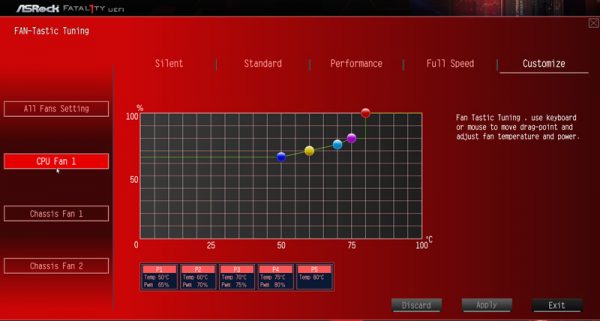
For the chassis fan connectors you can even select, which source you want to use for temperature measurement – Monitor CPU or Monitor Motherboard. Then click on apply and save the values.
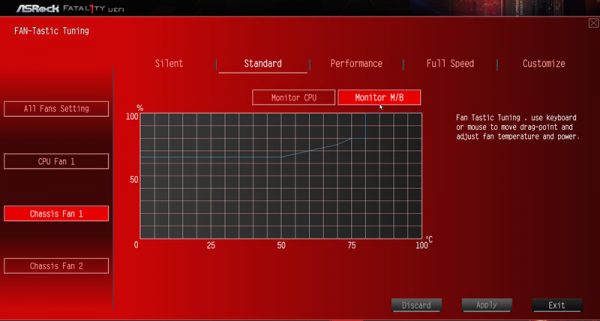
And even on a control of the 3-pin chassis fan was thought.
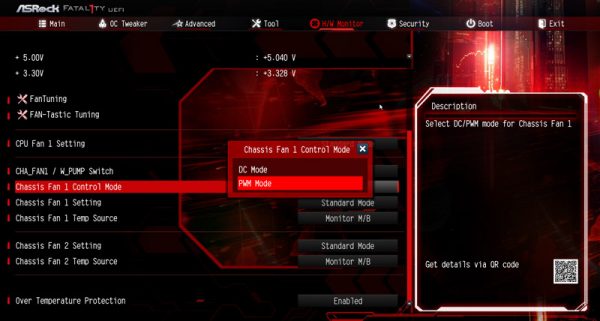
If you prefer to set the values in Windows, you can use also the ASRock F-Stream tool.
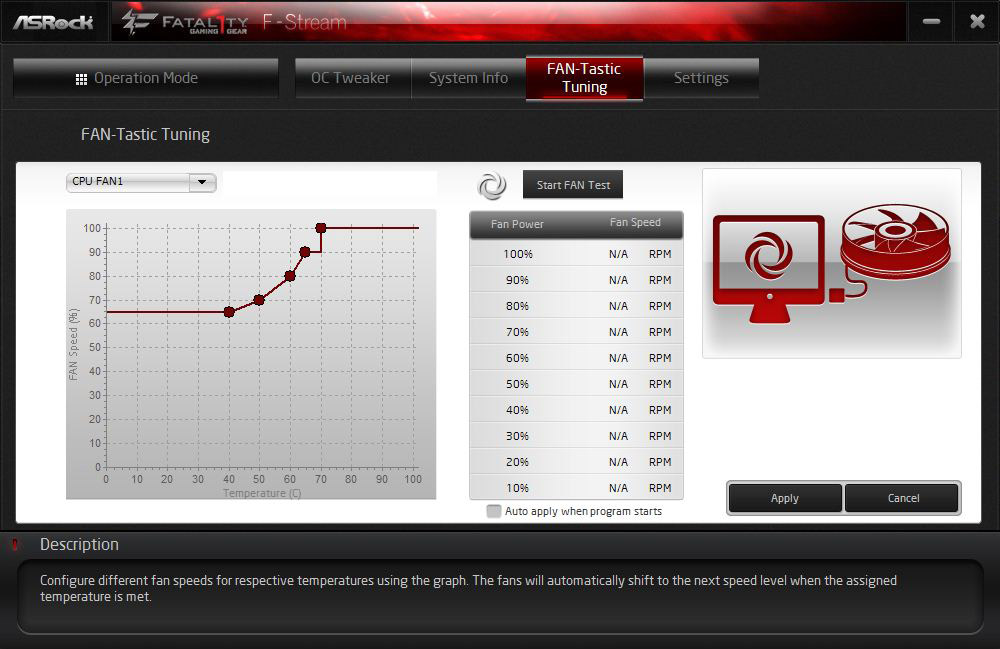
You can usually get along without an expensive Fan Controller, because the fans are controlled with this fan control based on CPU or motherboard temperature.
ASRock X370 Gaming-ITX/ac energy consumption …

